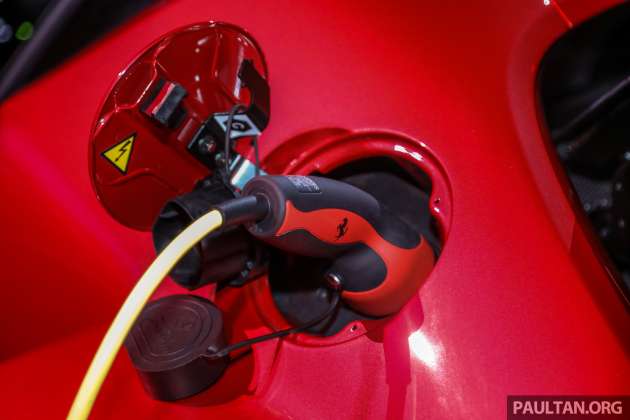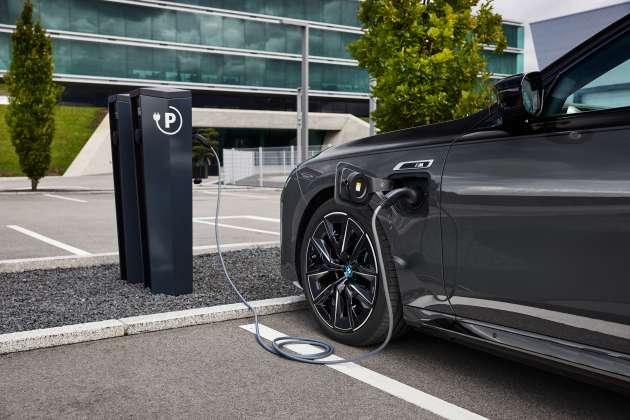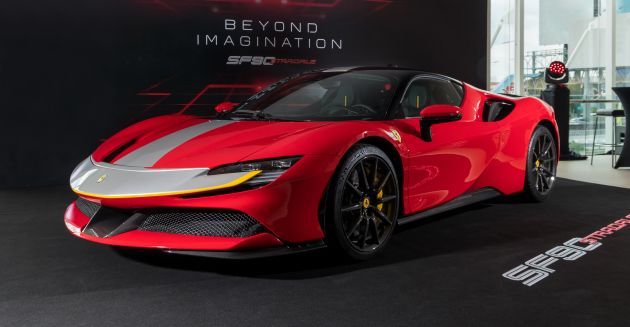Carmakers often contend that plug-in hybrids are their stepping stone towards full electrification, offering the silent, zero-emission running of an electric vehicle with the convenience and hassle-free nature of a petrol- or diesel-powered car. This has contributed to a growing number of PHEV sales in Europe, where tightening emissions regulations are forcing companies to build more and more of these vehicles as a stopgap.
Of course, we’ve known that the eco credentials of PHEVs aren’t quite the slam dunk that carmakers have led us to believe, given that the driving habits of actual buyers differ greatly from the, shall we say, optimistic nature of laboratory-based driving cycles like WLTP. But a new study conducted by the European Environment Agency (EEA) has laid bare just how big a gap there is between the fuel consumption figure that is claimed and what owners are actually getting.
Crucially, the EEA obtained the data through the onboard fuel consumption monitoring devices installed in vehicles sold in the EU – a requirement as part of WLTP certification – that were supplied by the carmakers. While this provides a certain level of scope for manufacturers to manipulate the data, it does mean that the data represents real-world usage from actual customers, rather than just another test conducted by boffins.
In all, the EEA received data from 988,231 vehicles (including 916,216 cars and 12,301 vans) out of the 9,821,479 registered in the EU, Iceland and Norway in 2021 – the first year the aforementioned measuring devices were made mandatory. The agency said the study aimed to measure the discrepancy between WLTP and real-world fuel consumption and carbon dioxide emissions, as well as suggesting ways to tweak the WLTP cycle to be more realistic.
What the EEA found was that vehicles powered by internal combustion engines registered fuel consumption of 7.44 litres per 100 km, versus their claimed WLTP average of 6.13 l/100 km. This indicated that the drivers used around 1 to 1.5 l/100 km more than official estimates. A similar gap existed between real-world (180.3 grams per kilometre) and WLTP (148.8 g/km) CO2 emissions, a difference of 21.2%.
This gap widened to a chasm when it came to PHEVs, which registered a whopping 3.5 times (252%) greater fuel consumption (5.94 l/100 km) and CO2 emissions (139.5 g/km) in the real world compared to their claimed WLTP averages (1.69 l/100 km and 39.5 g/km respectively). The EEA said the result showed that plug-in hybrids were being charged and driven in electric mode much less than expected, and that the assumptions used for calculating the WLTP test do not represent real-world conditions.
The good news is that for all the fear-mongering about PHEVs being more polluting than even pure ICE vehicles, the study showed that plug-in hybrids still provided a net benefit. On average, they did manage to consume less fuel and release fewer emissions compared to their petrol- and diesel-powered counterparts – even if the reduction is only by an average of 23%.
Some PHEVs did better than others. For example, Kia plug-in hybrids built in Slovakia (that is, the Sportage and Ceed) consumed an average of just 3.87 l/100 km and produced just 88.13 g/km of CO2. That’s still a big jump from the WLTP estimates of 1.48 l/100 km and 33.72 g/km respectively, but it’s impressive nevertheless and proves that these cars either were more efficient or their owners were more diligent in plugging them in to charge. It’s a relatively small sample, however – just 82 cars were registered here.
On the flip side, luxury and performance PHEVs were the worst offenders on the list, reflecting badly on both their cars’ relative inefficiency, shorter all-electric range figures and their owners lackadaisical charging attitudes. Porsche’s PHEVs had an average fuel consumption of 10.79 l/100 km versus their WLTP estimate of 3.03 l/100 km, while the sole Bentley PHEV listed in the study used an average of 12.97 l/100 km versus its WLTP estimate of 3.6 l/100 km.
The worst of the worst, however, was Ferrari. Its 296 GTB and SF90 Stradale/Spider used a terrifying 20.06 l/100 km of fuel on average versus their average claimed WLTP figure of 6.88 l/100 km. That’s not exactly surprising, given that their electric motors are mainly used for increasing performance rather than for reducing fuel consumption. What’s more surprising is that they used much more fuel than even Maranello’s notoriously gas-guzzling pure petrol models, which only consumed an average of 16.28 l/100 km. Ouch.
These figures are in line with the EEA’s findings, which were that heavier ICE vehicles like SUVs and luxury cars produced 1.5 to 2.5 times more carbon dioxide emissions than claimed, compared to a gap of 20 to 40 g/km for lighter vehicles. This adds to their already higher WLTP CO2 emissions figures and, given the wider industry trend towards larger, heavier vehicles, offsets the gains being made in terms of efficiency.
For its part, the EEA said that it’s too early to identify trends in fuel consumption and emission discrepancies, given that the vehicles registered have only been on the road for one year. However, the gap for PHEVs is huge, and the EU is already changing the way these figures are being calculated for plug-in hybrids. These changes will be applied in two steps, from 2025 and 2027 onwards.
So remember guys – just because you bought a plug-in hybrid doesn’t mean you will automatically save fuel. The savings in fuel bills and reduction in emissions rely heavily on how often you plug your car in to charge, and if you don’t, you may even use more fuel and pollute more than if you had just bought an ICE car to begin with.
Looking to sell your car? Sell it with Carro.






Ferrari owners don’t give a damn about fuel consumption…
Ferrari purosangue owners refill Minyak kuning
Additional CO2 (g/km)
1/Mercedes AMG (5.4)
2/Ferrari (4.2)
3/BMW GMBH (3.5)
4/FORD (3.0)
5/ALFA (2.6)
6/AUDI Sports (2.5)
*Above are sports divisions
Prius Prime?
performance is all that matters. not how much fuel it consumes. they just want the badge, prestige and performance.
Oh yes. You need EEA and fuel consumption monitoring devices to tell that PHEV consume more fuel. The owners are too dumb to tell the difference.
When will Ferrari come up with diesel variant.
Crazy clickbait tittle
Lame article
tax the rich, they are the problem
European car makers is proponent of start-stop feature to reduce carbon emission. But do they actually use it based on practicality?
Then they go phev since hybrid by Toyota is too good. Actually carbon dioxide emissions from hybrid is much easier to ascertain but phev depends on how frequently the battery gets recharged. If it takes 8 hrs to recharge well it is not so practical lah.
In my humble opinion phev is a fast way around to meet euro standard. Lack practicality is the issue
So basically the whole article is bad news that are actually good news?
Not surprising. I’m always doubt the efficiency and the emission of the PHEV. The fuel consumption figure is too good to be true. Anyone who have PHEV will surely baffled by their fuel consumption where it is nowhere near the claimed value.